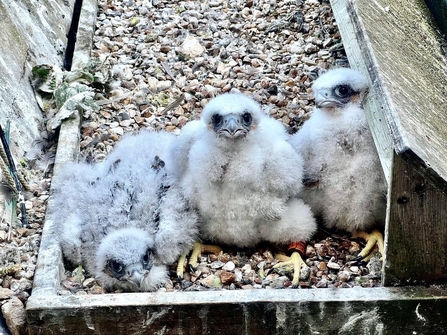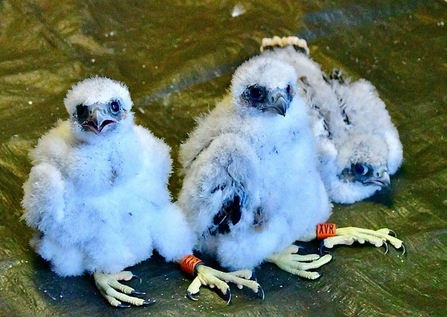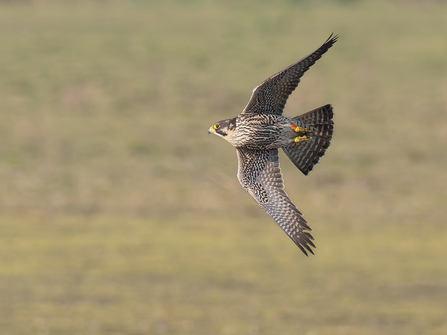When a Peregrine chick was bred for the first time on St Albans Cathedral in May 2022, as a licensed bird-ringer/nest recorder and holder of a government license to visit the nests of this specially protected species, I ringed the young female bird which was seen to successfully fledge the nest in late June of 2022. We were then delighted to see the Peregrines return to breed again in 2023 and 2024 and they raised three young in each year over that period.
This year has been difficult with the well-publicised incident where the first clutch of three eggs were destroyed on 7 April 2025. However, the resilience of the Peregrine pair shone through and they laid a second clutch in early May. These hatched during the second week of June.




